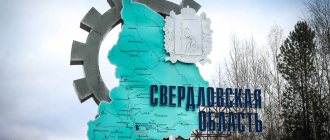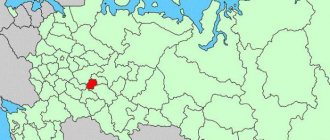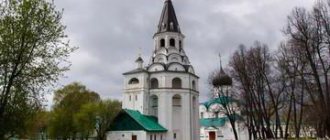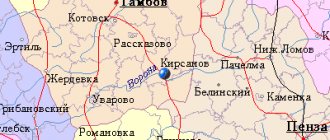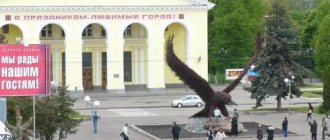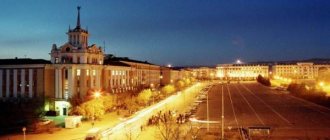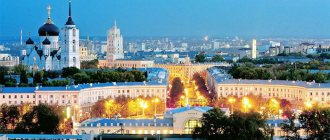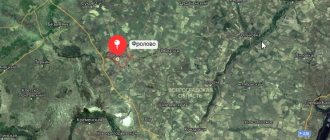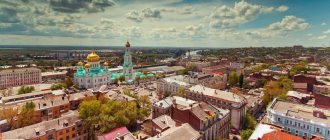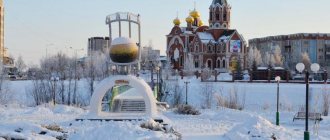Tambov region is a subject of the Russian Federation. Its area is about 35 thousand square meters. km. It is in 63rd place in the list of regions. It is located in the south of the East European Plain. Awarded the Order of Lenin. In total, more than 1 million people live in the region. In terms of population, it ranks 48th among other regions of Russia. There are a total of 307 municipalities in this region. City districts - 7. The list, which can be viewed below, shows the largest cities in the Tambov region. It is compiled according to increasing population size.
- Kirsanov. About 17 thousand people live here. It ranks 737th in the ranking of Russian cities.
- Uvarovo. As of 2021, just under 25 thousand people live here. It is in 585th place (data current as of January 1, 2015).
- Kotovsk. Industrial satellite of Tambov. The population is more than 30 thousand people. Among Russian cities it ranks 495th.
- Morshansk. The administrative center of the district of the same name. About 40 thousand people live here. In the ranking of Russian cities it occupies 395th position in terms of population.
- Rasskazovo. It is a regional center. As of 2021, almost 45 thousand people live in it, ranking 354th.
- Michurinsk. In terms of population, it is second only to Tambov. In 2021, according to the census, the number of residents is almost 95 thousand people. In Russia it is in 181st place.
- Tambov. It is the administrative center. It is home to about 290 thousand people. If we compare other cities in the Tambov region, Tambov is the largest. In Russia it ranks 68th.
In addition to urban districts, there are also municipal districts, urban and rural settlements.
What holiday is it today?
December 16, 2021, Thursday
Today are holidays, events: Events that happened on December 16 in the world, in different years Tomorrow: Day of Strategic Missile Forces Day of Employees of the State Courier Service Memorable date in the military history of Russia: Capture of the Ochakov fortress in 1788
Today is the Orthodox holiday of the Prophet Zephaniah. Reverend Savva of Storozhevsky, Zvenigorod. Martyr Angelis... Tomorrow: Great Martyr Barbara and Martyr Juliania of Iliopolis. Venerable John of Damascus...
Today is a national holiday: Day of World Silence and Silence... Tomorrow: Barbarian Day...
Seasons
Seasons, four periods of the year (spring, summer, autumn and winter) characterized by certain average temperatures. The period during which the Sun passes through one of these sectors is called the season. Spring in the Northern Hemisphere and autumn in the Southern Hemisphere begin when the Sun passes through the initial circle of declination and its right ascension is 0° (vernal equinox). Summer in the Northern Hemisphere and winter in the Southern Hemisphere occur when the sun's right ascension is 90° (summer solstice). Autumn in the Northern Hemisphere and spring in the Southern Hemisphere begin when the sun's right ascension is 180° (autumnal equinox). The beginning of winter in the Northern Hemisphere and summer in the Southern Hemisphere is considered to be the winter solstice, when the direct ascension of the Sun is 270°... Next: Seasons. Russian folk calendar. Monthly words...
Rasskazovo
The town of Rasskazovo, Tambov region, was founded in 1697. The village became famous thanks to a peasant who received a royal charter. Residents were mainly engaged in knitting stockings, soap production and leather tanning. In 1744, a distillery began operating, and in 1754, a cloth production began. Thanks to the rapid development of industry, the village began to gradually expand. City status was awarded in 1926. Currently, the area of Rasskazovo is slightly more than 36 square meters. km. In 2021, the number of residents decreased to 44.2 thousand people. It is worth noting that the largest population was almost 51,000 in 1990. Rasskazovo is an industrial satellite town of Tambov.
Folk calendar about every day
Every day one season always replaces another and this determines a person’s way of life. In connection with this, a folk calendar was formed in which there were practically no nameless, unmarked days. Every day was special, had its own purpose. All this was determined by climate conditions and astrological phenomena.
A calendar is a system for counting periods of time. The first calendars arose a long time ago, in ancient times, because there was a need to measure time. The word calendar comes from the Latin words caleo - to proclaim and calendarium - debt book. This is due to the fact that in Ancient Rome the beginning of each month was especially proclaimed, and because it was customary to pay debts on the first day of the month. Different peoples counted time differently. Some calendars are based on the changing phases of the moon - lunar calendars; in others - the change of seasons - sunny; in others, the length of the year was coordinated with the change of seasons, and the counting of months was associated with the phases of the Moon. Such calendars are called lunisolar.
In Rus', the calendar was called a monthly calendar. Every day, the month book covered the entire year of peasant life, “describing” day by day, month after month, where each day had its own holidays or weekdays, customs and superstitions, traditions and rituals, natural signs and phenomena. The cyclical nature of the calendar is reminiscent of human life, where spring is youth, summer is heyday, autumn is the time of harvesting fruits (it’s good if there are some, otherwise you can live your life without collecting fruits), winter is the time of wisdom and peace. This cyclicality and rhythm determined the way of life of the farmer. The folk calendar was an agricultural calendar, which was reflected in the names of the months, folk signs, rituals and customs. Even the determination of the timing and duration of the seasons is associated with real climatic conditions. Hence the discrepancy between the names of the months in different areas... Next: Folk calendar...
General information about the Tambov region
Distinctive features .
We know a lot about the Tambov region thanks to its nature. Here you have the “Tambov wolf”, and bees on the coat of arms, and old Michurin, a famous breeder. And to top it all off, the final chord is first place in the environmental rating of Russian regions for the summer of 2013. As for the catchphrase “the Tambov wolf is your comrade,” there are several opinions. But most likely, the reason is that “wolves” were the name given to criminals who were hiding in the Tambov forests, as well as in general to all suspicious visitors who could potentially be at odds with the law.
And in 1955, the film “The Rumyantsev Case” was released, in which for the first time this phrase was heard throughout the country, which was later played out more than once. For example, in the film “Ivan Vasilyevich changes his profession,” it sounded like this: “The Tambov wolf is your boyar.”
Before the revolution, the Tambov region was one of the main agricultural regions of the country. Here are the best black soils in the world, the layers of which in some places reach 4 meters in depth.
Another natural attraction of the region is the Voroninsky Nature Reserve. It owes its origin to the famous Russian traveler Semenov-Tien-Shansky, who drew attention to the unique nature of the forests along the Vorona River and proposed creating a natural park here. This initiative was implemented in 1916-1917 by his own son, a talented geographer.
Voroninsky Reserve
The Tambov region has good scientific potential. A special place here is given to Michurinsk, which received the status of a science city and specializes in innovation in the agro-industrial complex. Two important scientific centers are located here - the All-Russian Research Institute of Horticulture named after. Michurin and the All-Russian Research Institute of Genetics and Fruit Plants named after. Michurina.
House-Museum of Michurin in Michurinsk
Geographical location . The Tambov region is located in the European part of the Russian Federation, in the center of the East European Plain. It is part of the Central Federal District. Its neighbors are: Ryazan region in the north, Voronezh region in the south, Lipetsk region in the west, Saratov region in the southeast and Penza region in the northeast.
1,400 rivers, rivulets and streams flow through the region. There are also 300 lakes and about 900 ponds and reservoirs. Almost the entire surface of the Tambov region is flat, dotted with ravines and gullies. Forests occupy only 10% of the territory; the main natural zone is forest-steppe.
Nature of the Tambov region
Population. There are 1,075,748 people living in the Tambov region, of which 649 thousand are working-age people. Now the Tambov region is rapidly dying out. The natural population decline in 2012 was −6.5 people. per 1000 inhabitants.
The Tambov region has always been famous for its peasantry, which was very prosperous and formed the basis of the well-being of the region. These people were always ready to stand up for themselves and for their rights. During the civil war, the largest peasant uprising broke out here - the “Antonovschina”, which, despite the first successes, was then brutally suppressed. Even now, the share of the rural population in the Tambov region is relatively high - 41.3%.
As for the main nationalities, Russians make up 94.97% of the region's population. Ukrainians are in second place (0.67%), Armenians are in third (0.42%).
Crime . The Tambov region is a surprisingly calm region in terms of crime. In the ranking of regions by the number of recorded crimes, it ranks 67th, and there is a noticeable downward trend in crime.
The unemployment rate in the Tambov region is below the national average - 4.86%. But before 2010, it was much higher, about 9%, so don’t delude yourself - the decline in unemployment may only be a temporary phenomenon. The average salary in the region is not very high - 16,758 rubles. More than 30 thousand rubles a month are received here only in the field of financial activities. The military and transport sector also have good salaries. In light industry and manufacturing industries, wages, on the contrary, are significantly below average.
Exercises of the Ministry of Emergency Situations at the Druzhba oil pipeline
Property value. You can buy a one-room apartment in Tambov quite inexpensively - for about 1 million rubles. But most “one-room apartments” are offered at a price of 1.5 million rubles and more. Elite apartments in new buildings are sold for even more than 2 million rubles. For the same amount you can buy a two-room apartment, although most offers cover the range of 2.5 - 2.8 million rubles.
The climate of the Tambov region is moderate continental. The average January temperature is −8°C, July +19.4°C, annual precipitation ranges from 322 to 807 mm. The flat terrain of the region freely allows cold Arctic air masses to pass to the south. Therefore, frosts are possible here from the end of September until mid-May. Dry periods with hot winds are also common.
Fishing calendar for every day
The fishing calendar should not be taken as an absolutely indisputable truth. Fish biting is greatly influenced by a whole range of natural factors, as well as the influence on the nature of man himself. You must not forget that the fish’s bite depends and is determined not only by the calendar dates and biological cycles of their life, reflected in the calendar, but also, no less, by the state of their habitat; the bite also depends on weather conditions: air and water temperatures, cloudiness, wind direction and strength, etc... Next: Fishing calendar...
Morshansk
The fourth largest city in terms of population is Morshansk. Situated on an area of almost 19 square meters. km. Previously it was considered a center of grain trade. Until 1779, the modern city of Morshansk in the Tambov region was considered a village. It was called Morsha. However, by decree of Catherine II, the village was transformed into a district town. Currently, almost 40 thousand people live in Morshansk. The food, tobacco, chemical, and cloth industries are developed here. Construction materials are also produced and a locomotive depot operates. Located north of Tambov at a distance of 90 km.
Orthodox calendar about every day
Orthodox calendar: Orthodox, Church and Christian holidays.
The church year is an alternation of weekdays and holidays. On weekdays, a person is called to work “by the sweat of his brow to earn his bread.” Holidays are given in order to feel liberation, to rise above the bustle and routine of the world, to feel involved in the highest of worlds, “where there are no illnesses, sorrows and sighs, but endless life.” Since ancient times, holiday cycles have been associated with the seasons. The pagans associated them with the worship of the forces of nature, the cult of which in the Old Testament was replaced by gratitude to the Creator for the universe. And although the connection between holidays and the seasons has not completely lost its power, since God is present in everything, in the plant and animal world, in human works, it nevertheless faded into the background, giving way to a spiritual foundation built on the Sacred Scriptures. The history of Orthodox holidays dates back to the times of the Old Testament. Each of the Orthodox holidays is dedicated to the remembrance of the most important events in the life of Jesus Christ and the Mother of God, as well as the memory of saints... Next: Orthodox calendar...
Tambov
The most important industrial, cultural and economic center is the city of Tambov. It is the largest in the region. Occupies an area of more than 90 square meters. km. Awarded the Order of the Red Banner of Labor. Currently, almost 290 thousand people live in it. Unfortunately, the city's birth rate is lower than its death rate. That is why the population is gradually decreasing. Main economic sectors: mechanical engineering, technical services, light, food and chemical industries.
Russian folk calendar for every day
The word “sign” comes from the word “notice”, i.e. observe. As a result of observing what happens around a person every day, he accumulates life experience. This knowledge was passed down from generation to generation, carefully preserved and people trusted it as a sacred book. Many signs have come to us from the depths of centuries without losing their knowledge. Each of us is free to choose: to dismiss all this as an absurd superstition or to take a closer look at the signs and take the centuries-old experience of generations more seriously. Most of us, when taking exams, ask them to scold them, boasting about some kind of good fortune or luck, spit so as not to jinx them or knock on wood, take a detour if a black cat crossed the road, are afraid of the number 13 and much more. And who among us does not have lucky things, numbers? Who has never resorted to the help of fate at least once in their life, who has not believed in secrets? It’s as if everything connected with signs is hidden somewhere deep in our subconscious. Often we remember them mechanically, unconsciously, or just as a joke. But, undoubtedly, the signs contain a lot of accurate knowledge and practical wisdom of our ancestors. They cover all the characteristic, often difficult to perceive, natural phenomena. Signs have preserved a lot of what was in old folk holidays and customs; they help predict the weather, grow crops... Next: Folk signs...
Holiday calendar, dates and events of the year
All state and professional holidays in Russia, including significant World and International holidays, and other equally interesting holidays and events about every day.
The holiday has always kept pace with the history of mankind. Social time can be divided into three types: everyday life (weekdays), weekends and holidays. Everyday life is a series of practices repeated day after day and every day (work). Weekends are regular breaks from the rush of everyday life. It is believed that on weekends a person should restore his strength after working days. Day off, non-working day. A holiday is a day of celebration established in honor or in memory of someone or something. A day or series of days celebrated by the church in memory of a religious event or saint... Next: Calendar...
Kotovsk
Kotovsk (Tambov region) was founded in 1914. It forms an urban district. It received city status in 1940. It is located on an area of about 17 square meters. km. It is located very close to the administrative center of the region - Tambov. The distance between these cities is 15 km. Currently, 30.7 thousand people live here. At the end of the twentieth century, the population began to decrease. Since 1996, the number of residents in the city has decreased by approximately 8,000. Kotovsk (Tambov region) is developing in four main industrial areas: mechanical engineering, food, chemical and light industry. In total, there are 7 enterprises in the city, and there is also its own thermal power plant. Currently there are three schools, a boarding school, an industrial technical school, a polytechnic college and creative houses.
Prayer book, Orthodox prayers for every day
Prayer is the most powerful means for healing all illnesses - both physical and mental. Prayers can be laudatory or grateful, petitionary and repentant. If we have offended God, sinned, we must ask Him for forgiveness, that is, repent. Such prayers are called repentant prayers. If everything is fine with us, if we and our loved ones are healthy and prosperous, if we have a place to live, something to wear, something to eat, we must glorify and thank God for this. Such prayers are called praise or thanksgiving. If some misfortune, illness, trouble or need happens, you need to ask God for help. Such prayers are called petitionary... Next: Orthodox prayers...
Zodiac, astrological, eastern calendar. Zodiac signs
In ancient times, to establish the calendar, priests used knowledge of the positions of all the planets. Before the reform of Peter 1, the New Year was celebrated on the Day of the Autumn Equinox. On this day, according to ancient legend, the most peaceful treaty was concluded between the Great Race (ancient Slavs) and the Great Dragon (ancient Chinese) and it was approximately 7518 years ago... For the ancient Slavs, the calendar month corresponded to the lunar cycle from new moon to new moon, taking into account such Thus, the relationship of the entire annual cycle with astronomical and natural phenomena. There was no coherent calendar system. The main natural phenomena are still considered to this day to be the days of the solar equinox and solstice - the Slavic holidays Maslenitsa, Kupala, Ovsen and Kolyada. But during the time of Peter 1, all ancient Slavic calendars were abolished and a new Western European calendar from the Nativity of Christ (Julian calendar) was introduced, while the beginning of the calendar was moved to January 1. The Julian calendar (old style) did not take leap days into account and accumulated one extra day every 128 years. After the October Revolution in 1918, the Gregorian calendar (new style) was introduced in Russia, according to which an amendment of 13 days was introduced. The calendar of the ancient Slavs was based on two planets: the Sun and the Moon. And now they don’t use anything at all. The calendar has become static. There is no such thing as the calendar, it turns out, resting on some planet. Nobody even knows about it. There are just some standard numbers, there are months and holidays. The calendar is based on the Sun and Moon. Why is this so? Because these two luminaries influence the Earth. The Earth revolves around the Sun, and the Moon revolves around the Earth. And these two luminaries create the atmosphere on the planet. From here the calendar is built... Next: Astrological calendar...
Dream books online, interpretation of dreams
A dream book is nothing more than an interpreter of dreams and dreams, a translator of dreams. Since ancient times, people have been using dream books; dreams have always been given great importance, and people have often noticed the prophetic properties of some dreams. The dream book can become your faithful assistant every day and throughout your life, thanks to the dream interpreter you can always make the right decisions, the dream book will help you resist temptations in time, and will warn you against wrong steps and frivolous actions. Further…

